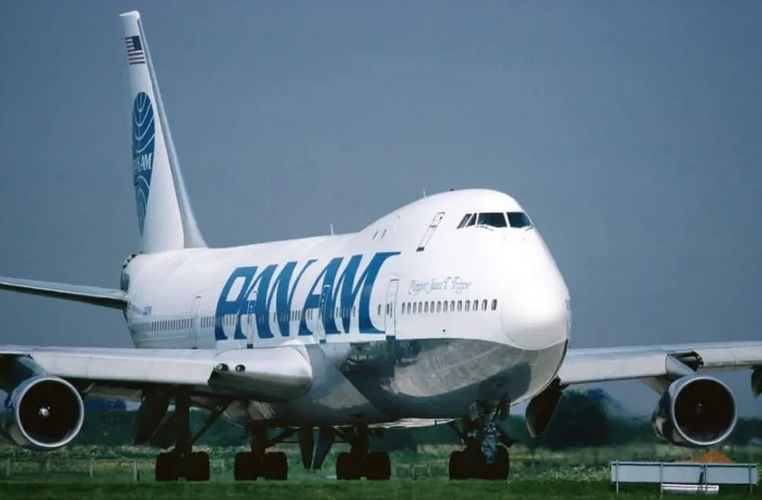Pan Am Lives On at the Pan Am Museum

After more than 64 years in business, the world’s most iconic airline, Pan American World Airways (also known around the world as Pan Am), ceased operations on December 4, 1991. A perfect storm of terrorism, rising fuel costs, and an economic downturn resulted in the closure of the “World’s Most Experienced Airline.” However, thirty years later, the airline lives on at the Pan Am Museum in Garden City, New York (Long Island).
Founded in 2015, the Pan Am Museum Foundation is the only institution with a permanent and physical location solely dedicated to Pan American World Airways. With a mission to “educate and inspire future generations by preserving the diverse and historical institutional and personal stories of Pan American World Airways,” the Museum explores the rich history and culture of the airline, and its people. Through permanent installments, digital content such as social media and podcasts, and through partnerships with other institutions the Pan Am Museum Foundation brings the under celebrated history of the airline to life through educational storytelling and programming. https://www.thepanammuseum.org/
Pan American World Airways ceased operations, 30 years ago, on December 4th 1991. Founded in 1927, the airline flew for over 64 years. With its closing marked the end of an era for commercial aviation. Saturday, December 4, 2021, marks the 30th Anniversary of the shutdown of an airline that pioneered air travel and luxury in the skies, while cementing itself as a fixture in popular culture throughout the world. As the airline of choice for the Beatles, James Bond, Indiana Jones; to Hollywood stars, corporate executives, and politicians; to tourists and families, Pan Am remains present in the hearts and minds of millions across the globe. The skies today are absent and solemn without Pan Am’s signature caviar, fine wines, delicious food and exceptional service. Although the airline is no longer with us, the legacy of Pan Am is still alive and well at a Long Island Museum bearing its name.
Notable Pop Culture Mentions of Pan Am:
- June 18th, 1947: Deadheading Third Officer (pilot) Gene Roddenberry survives a Pan Am Lockheed Constellation crash in the Syrian desert.
- February 7, 1964: Pan Am brought The Beatles over on Boeing 707 “Clipper Defiance”
- April 3, 1968: Stanley Kubrick’s “2001 A Space Odyssey” is released with the popular promotional poster showing the fictional Pan Am Orion III being the transport from Earth to the satellite
- Former Pan American World AIrways CEO Najeeb Halaby daughter was the Queen Noor al-Hussein of Jordan
- 1982: Ridley Scott’s “Blade Runner” is released showing futuristic Pan Am advertising
- 2002: “Catch Me if You Can” starring Tom Hanks and Leonardo DiCaprio is the real story of Frank Abagnale who at one point impersonated a Pan Am Captain (he never flew an airplane)
- The Academy Oscar 2020 nominees included two movies with Pan Am cameos: Ford v Ferrari and Once Upon a Time in Hollywood

Pan Am cabin crew on the 747 first class cabin in the 1970s
30 Achievements that Define Pan American World Airways:
- 1927 First American airline to operate a permanent international air service.
- 1928 First American airline to use radio communications.
- 1928 First American airline to carry emergency lifesaving equipment.
- 1928 First American airline to order and purchase aircraft built to its own specification,
the Sikorsky S-40. - 1929 First American airline to employ cabin attendants and serve meals aloft.
- 1929 First airline to develop and use instrument flying techniques.
- 1931 First American airline to develop and operate four-engine flying boats.
- 1935 First airline to operate scheduled transpacific service.
- 1939 First airline to provide transatlantic passenger and mail service.
- 1942 First airline to complete a round-the-world flight.
- 1944 First airline to propose a plan for low cost, mass transportation on a worldwide basis.
- 1947 First airline to operate a scheduled commercial round-the-world service.
- 1948 First airline to provide tourist-class service outside the continental limits of the U.S.
- 1950 First commercial airline to enter the Korean airlift.
- 1952 First airline to use aircraft built specifically for tourist- class service on the transatlantic route — the Douglas DC-6B.
- 1955 First airline to order U.S. commercial jet transports.
- 1958 First airline to operate scheduled transatlantic service with American-built jets, the Boeing 707.
- 1962 First airline to make 100,000 transatlantic flights.
- 1962 First airline to establish a global electronic reservations system — Panamac.
- 1963 First airline to operate the Boeing 707-321C pure-jet freighters.
- 1965 First airline to operate around-the-world jet freighters.
- 1966 First airline to order the Boeing 747.
- 1967 First airline to make fully automatic approach and landing in scheduled service.
- 1968 First airline to transmit engine data and position information from the air to ground in less than a second via a data link system which routes the information to a computer in the home office and then to interested departments.
- 1969 First airline to install a computer on the aircraft to analyze engine performance and display to the crew any malfunction.
- 1970 First airline to operate the Boeing 747 in regularly scheduled service.
- 1974 First airline to open largest single air terminal in world (located at J.F.K. Int’l Airport, New York).
- 1976 First airline to take delivery of and inaugurate service with the Boeing 747 SP.
- 1978 First international airline to introduce a new class of service for business travelers and full-fare economy passengers—Clipper Class.
- 1981 First U.S.-flag airline to re-establish regularly scheduled flights to the People’s Republic of China.
